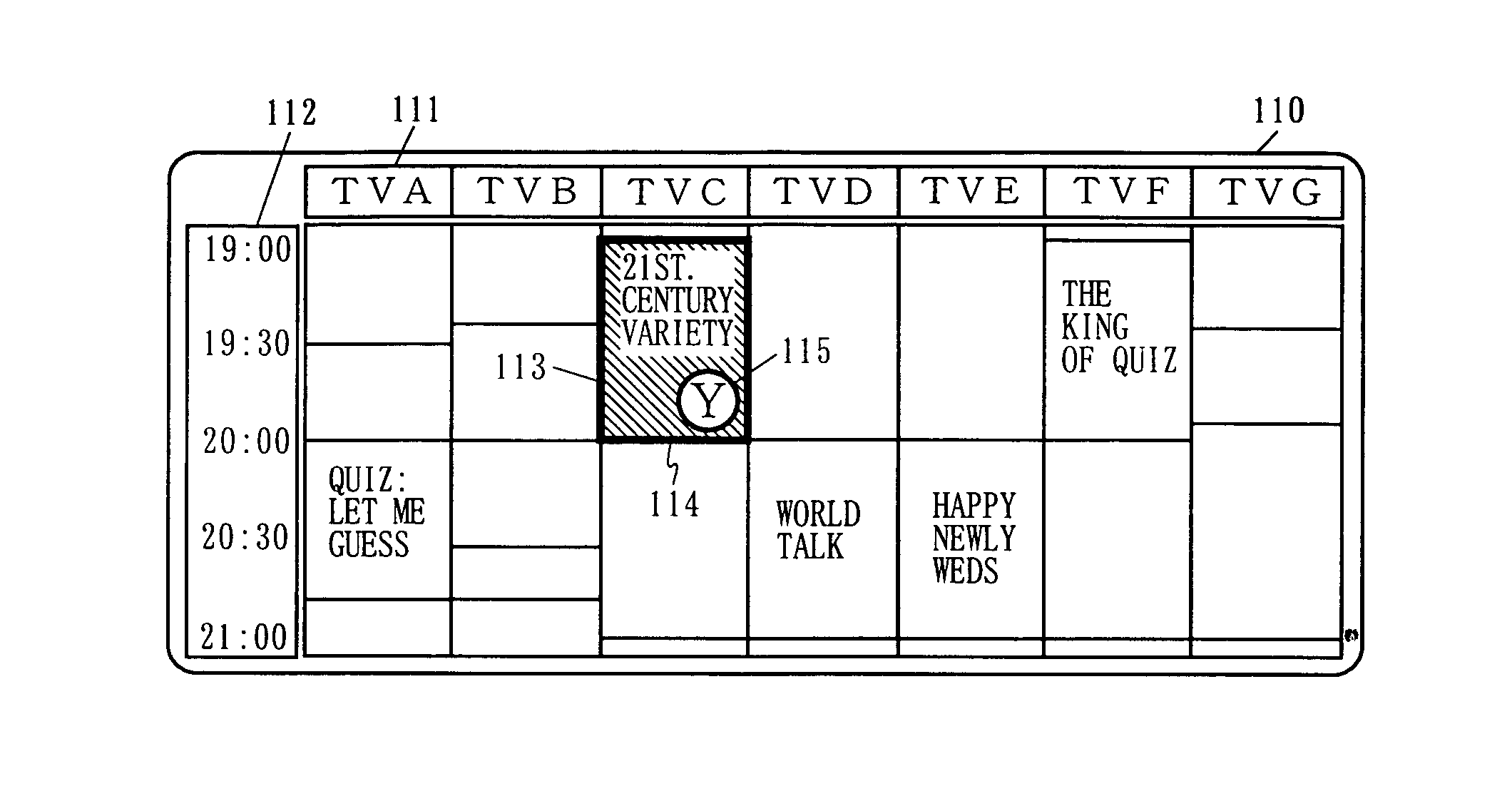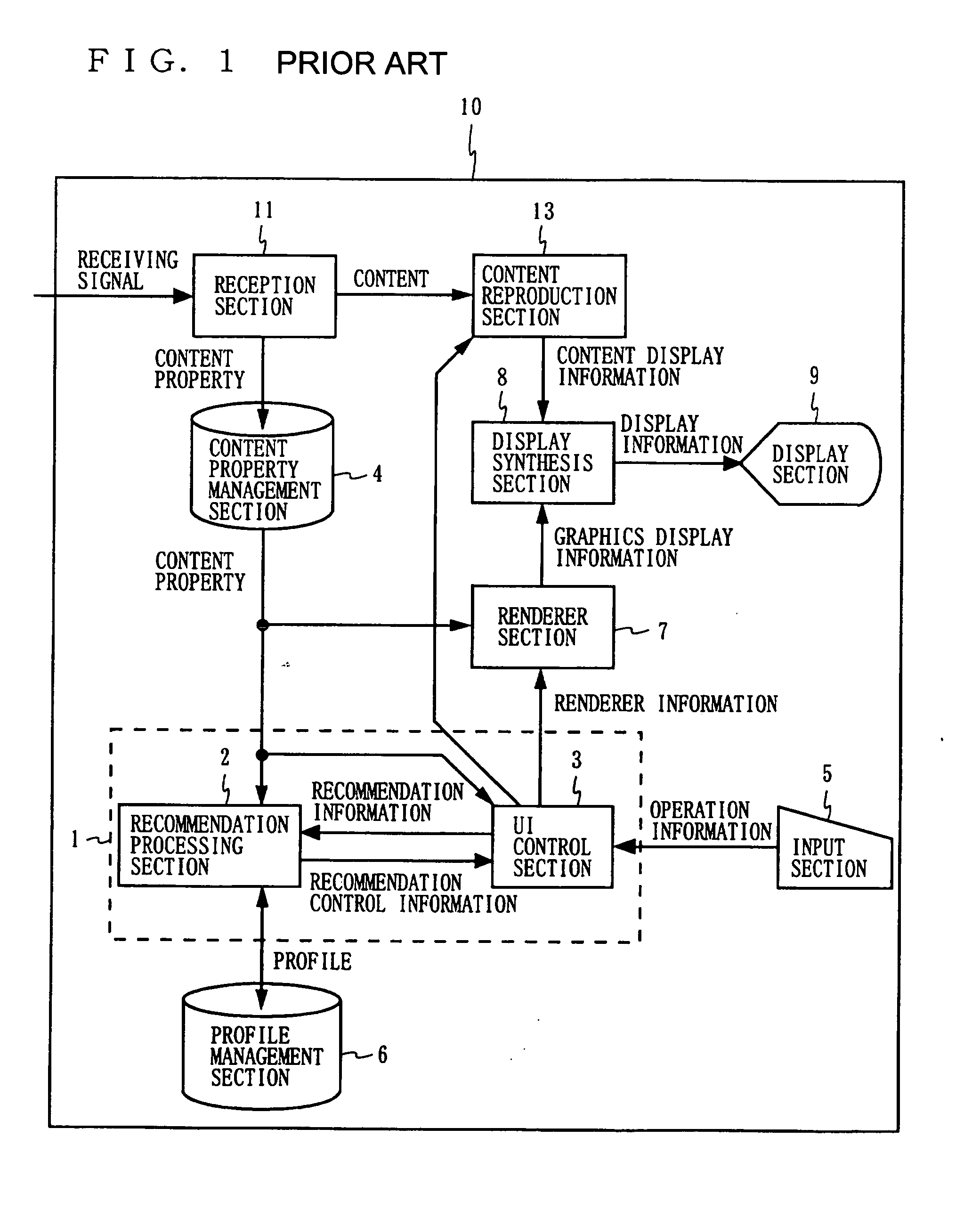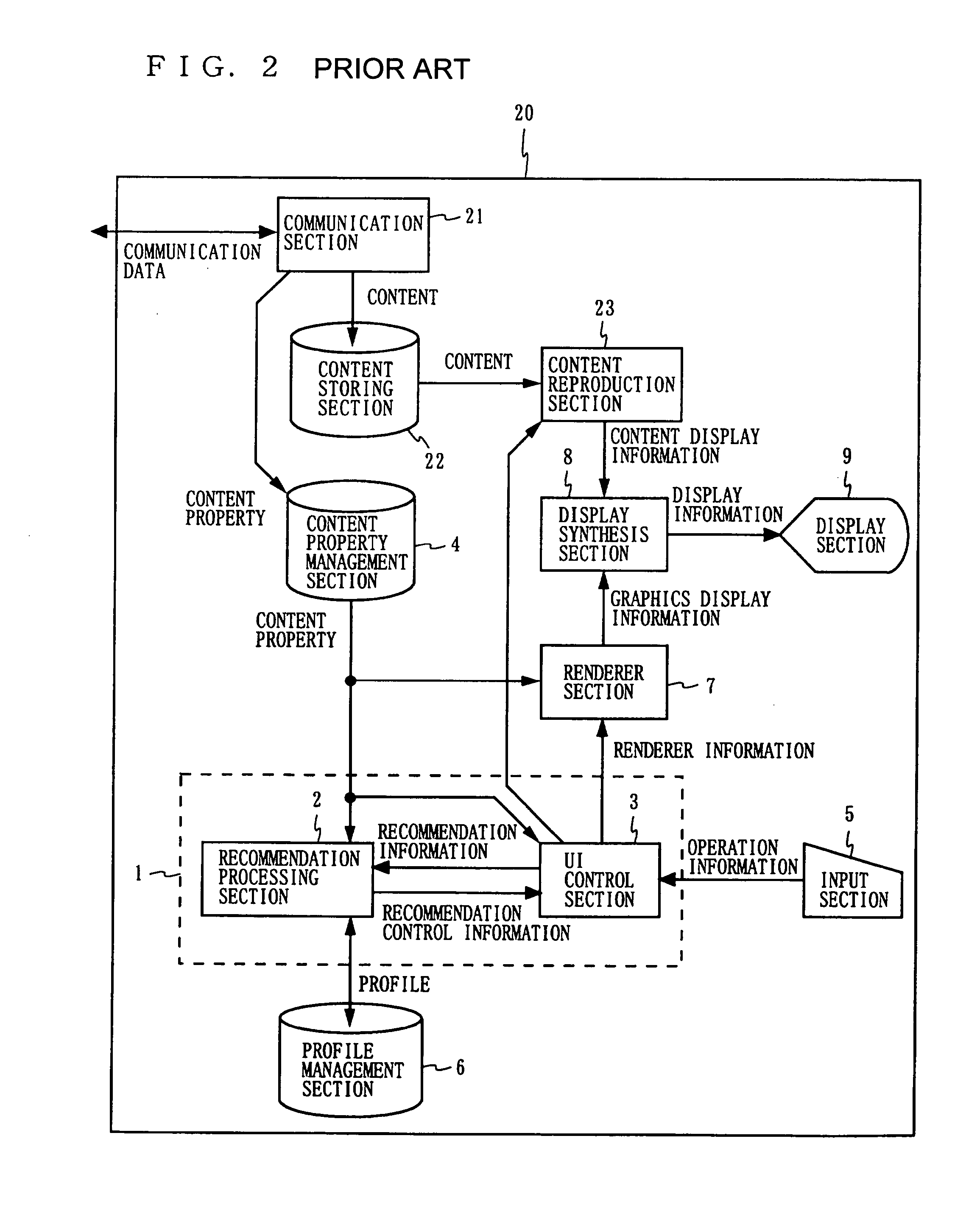Content selection method and content selection device
a content selection and content technology, applied in the field of content selection methods and content selection devices, can solve the problems of not being able to search through recommended content, the content selection device is not able, and the user's choice of content for viewing has become extremely difficult, so as to reduce the burden on the user's side, the time required for learning may be shortened, and the operation load is small
- Summary
- Abstract
- Description
- Claims
- Application Information
AI Technical Summary
Benefits of technology
Problems solved by technology
Method used
Image
Examples
first embodiment
(First Embodiment)
[0094] In a first embodiment, a GUI display will be described when the same executes an interaction process with the user by using an electric program guide (EPG). FIG.3A through FIG. 3C are diagrams each showing a GUI display for the content selection device according to the first embodiment. A display screen of the content selection device changes from display 110 to display 120 and then to display 130 as operated by the user. On each of the three displays, an EPG is displayed. In the EPG, a broadcast station name 111 and a time period 112 are respectively arranged horizontally and vertically, wherein each program is expressed in a rectangle area. Also, in the EPG a program (hereinafter referred to as a focus program) to which the user has been paying attention is displayed with a focus 113. Also, when the content selection device 10 determines that a program satisfies the preference of the user, the program is displayed in a different mode compared with the rest...
second embodiment
(Second Embodiment)
[0118] In a second embodiment, a GUI display will be described when the same displays a list of program in an order of recommendation level thereof. FIG. 5A through FIG. 5C are diagrams each showing a GUI display for content selection device according to the second embodiment. A display screen of the content selection device changes from, in the order of, display 210, display 220 and to display 230 as operated by the user. On the left hand side of each of the three displays, there is a display of a menu from which the user selects a genre; and on the right hand side of the displays, there is a display of a list of programs which are to be recommended.
[0119] The display 210 shown in FIG. 5A is an initial display, which shows the list of programs selected from among all the programs of all genres in the order of recommendation level from high to low. The display 210 includes a program display domain 211 and a menu display domain 212. In the program display domain 2...
third embodiment
(Third Embodiment)
[0143] In a third embodiment, a GUI display will be described when the same displays a viewing course which is to be recommended to the user. Here, a viewing course means to a plurality of programs arranged in a time sequence. The user can learn a sequence by which the content can be viewed. That is, the user can learn at what time and to what channel a channel selection should be made based on the viewing course recommendation which is made by the content selection device. FIG. 7A and FIG. 7B are diagrams each showing a GUI display for the content selection device according to the third embodiment. The display screen of the content selection device changes, in response to the user operation, from display 310 to display 320. On the left hand side of each of the two displays, there is a menu being displayed for the user to select a genre of a program; on the right hand side of the displays, there is a display of a viewing course which is to be recommended to the use...
PUM
 Login to View More
Login to View More Abstract
Description
Claims
Application Information
 Login to View More
Login to View More - R&D
- Intellectual Property
- Life Sciences
- Materials
- Tech Scout
- Unparalleled Data Quality
- Higher Quality Content
- 60% Fewer Hallucinations
Browse by: Latest US Patents, China's latest patents, Technical Efficacy Thesaurus, Application Domain, Technology Topic, Popular Technical Reports.
© 2025 PatSnap. All rights reserved.Legal|Privacy policy|Modern Slavery Act Transparency Statement|Sitemap|About US| Contact US: help@patsnap.com



